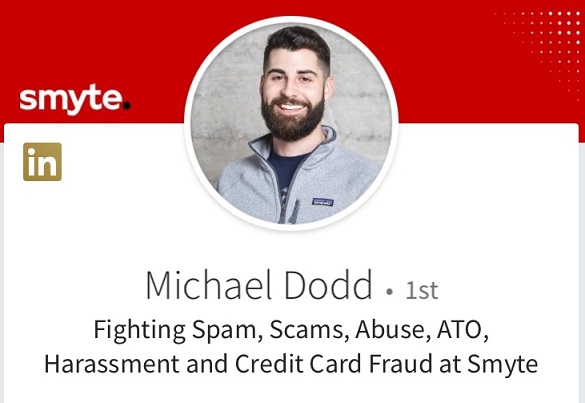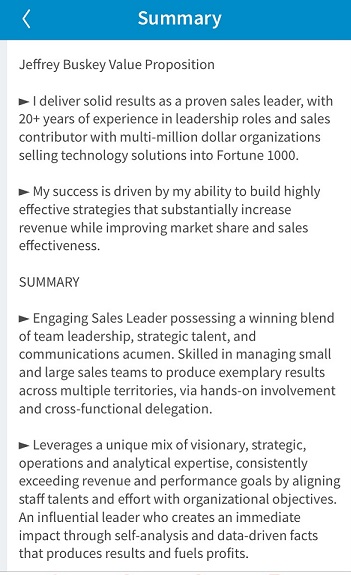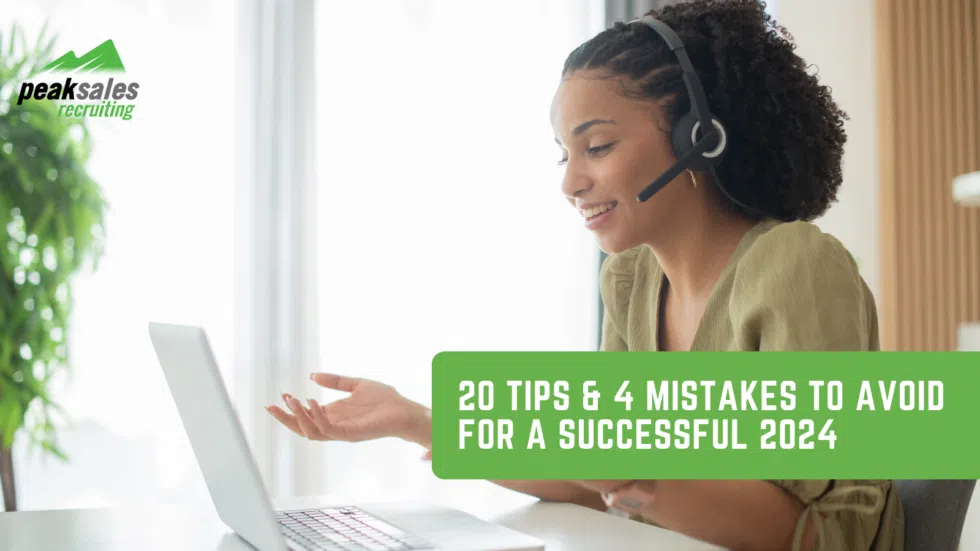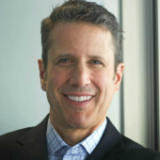
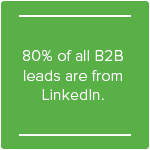 More than 80% of all B2B leads are from LinkedIn – so if you’re not using LinkedIn, or not using it effectively, you’re missing out big time. There’s a lot of opportunity on a platform that boasts half a billion users and encompasses every industry. But if you’ve only put together a basic professional profile, you won’t reap any of the benefits it has to offer.
More than 80% of all B2B leads are from LinkedIn – so if you’re not using LinkedIn, or not using it effectively, you’re missing out big time. There’s a lot of opportunity on a platform that boasts half a billion users and encompasses every industry. But if you’ve only put together a basic professional profile, you won’t reap any of the benefits it has to offer.
Personal branding is key for any salesperson to really benefit from LinkedIn. We’re going to show you exactly what it means to build a personal brand, and how to elevate and leverage it to drive sales.
Four steps to personal branding you can put into action now
Step 1: Define Your Audience
One of the first things to address when you’re building your personal brand is to understand your target audience. Once you’ve identified who you intend to reach, ask yourself the following questions:
- What are their likes and dislikes? Do they like long form professional articles, or short status updates with tips? Are they searching for how-to guides, or are they more interested in theoretical content? This will help you determine what type of content to create and share that will resonate with them.
- Who are they engaging with? Are there thought leaders already dominating the space? What are they sharing? What can you learn from them?
- What solutions are they looking for? Where do they need the most help? How can you position your solution as the right solution for them?
- Is there a dominant geographical area? Can you target your communications to be specific to the region? Are there local events that you can tie into your communications that will resonate?
Step 2: Build a Killer LinkedIn Profile
For your personal brand to be effective, you must invest the time and effort in creating and maintaining a strong profile. When you engage with people, you want your profile to help reinforce why people should engage with you.
Creating a robust profile is not a difficult task, it just takes some TLC. The first place you’ll want to start is the prompts you’ll get directly from LinkedIn. The platform will prompt you to fill out various details and let you know what you’re missing.
Customize Your Profile
Don’t just use the default data that LinkedIn provides. Take full advantage of the customizations it offers so you can really stand out.
Use a great profile picture
Dress for the job you want, not the job you have. A headshot is usually best, but there are rules that should be followed. Having a picture of you in action is a great alternative to a standard portrait.
Make sure you have a custom LinkedIn URL
Using your name is best for enhancing your personal brand, and it also helps with searchability online.
Write a better headline
Don’t try to be clever, unless that’s your personal brand. You’ll want to state exactly what you do, and how it helps the potential reader. Here are some best practices:
- Don’t be boring. Write something that attracts attention.
- Be confident. You don’t want to seem like you’re begging for business.
- State what you do. Be direct, the reader will appreciate it.
- Who are your solutions for? Work that into your headline.
- State how you’ll make their life better.
A great example comes from Michael Dodd. He’s direct, you understand what he does, who he works for, and what solutions he can provide.
Make your summary work for you.
Don’t waste the space of your LinkedIn Summary Section. Here’s your chance to grab attention and explain why people should do business with you. Make a convincing case. Here’s a great example from Sales Leadership Consultant, Jeffrey Buskey:
Add pictures and video.
Most people don’t do this, so it’s an area where you can really stand out. A video is not only more enticing, it generates 1,200% more shares than text and images combined. You can show people exactly what you’re about, and it’s more personal.
Show Off Your Accomplishments
Showing off what you’ve achieved is a great way to build credibility. You’ll want to showcase your overall sales performance, where you ranked on your team, President’s Club awards, territory growth, marquee clients you’ve worked with, etc. Your brand must be centered around how you’re an expert in a certain field, which is why people should work with you. Show off the qualifications that make you that expert, and tell the story of how you’ve achieved success.
Step 3: Build Trust and Credibility
Trust is a key component to any sale. As a successful salesperson, you know how hard it is to earn trust from a potential client. Best-selling author Neil Rackham conducted a study where he interviewed 50 customers who had turned Xerox down because of price. It turned out that in 64% of cases, price was not the primary factor. Buyers didn’t trust the salesperson or were afraid of becoming too dependent on a sole supplier.
Your personal brand and reputation can make or break the first impression you make on your prospective customers.
Build your Reputation
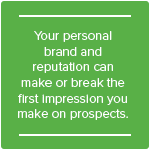
LinkedIn makes getting recommendations easy as it’s built right into the platform. It may seem obvious, but target recommendations from key players in your industry. Top executives and those who already have credibility and a great personal brand. Don’t be afraid to aim high! The results just might surprise you and give your brand a quick boost.
Here’s a few tips you can use to ask for a recommendation:
- Send a personalized email
- Write a recommendation for someone first
- Contact people you know well
- Provide content suggestions in advance
Build by Sharing
Put yourself out there! Sharing information is the easiest way to say “Hey, I’m an expert in this field, and here’s what you need to know about it today.”
Think about the people you follow. Leaders in their field are constantly sharing quality information. It’s a very simple way to show that you know what you’re talking about. If you want to be a leader, you need to be the person people follow for breaking news in your field, and trusted articles they can use.
Writing articles and posting video are two of the easiest ways to share things on LinkedIn. You can also share articles others have written, recommend industry people to your audience, and generally just share things you’re interested in reading and viewing.
Here’s a few examples of sales leaders who do this well:
Build by Engaging
LinkedIn at its heart is a social platform. Get involved in conversations, comment on articles, share things that you find useful, and ask questions of other creators. You need to be reachable and engaged with your audience.
Being a part of this community will position your brand in your field. It’s how you’ll make connections, get leads, build trust, and build a portfolio that showcases your brand to your targeted audience. That’s what personal branding is all about.
Step 4: Grow Your Following
Now that you have a solid LinkedIn profile, it’s time to think about how you can grow your audience. Each follower is a potential client, so the wider your reach, the more potential followers and clients you can expect.
Building an audience involves ongoing work with a clear focus in mind. If you’re an expert in your niche, keep your focus on that topic. You may be interested in multiple subjects, but you’ll need to keep focus to build your brand for people to find you, follow you, and continue to subscribe to what you’re sharing. You don’t want to be a jack of all trades, master of none.
There are a few things you should always be doing to grow your following and target new opportunities.
Always be Learning
If you want to know what great personal branding looks like, you’ll want to follow the people that do it well. By following and connecting with key players on LinkedIn you’ll learn from them, and apply the lessons to your own brand.
Always be Optimizing
Anytime you attend a conference, gain a new skill, achieve a new award, or generally build on your brand, you’ll want to be optimizing your message to show you fully understand and are involved in your industry. Being on the cutting edge will help you with your brand and keep you at the forefront of the field.
You’ll learn a lot about what’s working and what isn’t with your brand. What articles people like, what content they’re sharing, what questions they’re asking, and what the demographic is. This information will change overtime, and you’ll want to keep optimizing your profile, website, and social feeds to reflect this.
As LinkedIn changes, you’ll want to change too. Take advantage of new tools, implement new best practices, and generally stay on top of things for best results.
Always be Connecting
Think twice about turning down a connection, or an opportunity to connect on social media. Even if someone doesn’t need what you’re selling right now, you never know when they’ll need it down the road.
You’ll also want to try to connect with the audience of those that have personal brands similar to yours. Their audience is your audience. That doesn’t mean taking over their channel and saying “Hey, follow me too!” It means engaging with that audience in conversation, posting positive comments on things that leader is sharing, joining forums they’re involved in, and generally engaging wherever you can.
Building a personal brand is not an easy task, but nothing worthwhile ever is. If you’re still skeptical about the power of personal branding, this video by Brett Cohen is an excellent example of the impact it can have on people’s perceptions. Brett ran an interesting test to see if he could get people to believe he was a celebrity, simply by acting like one – and the results are astonishing.
Now you’ve seen the impact that personal branding can have. Here are a few more resources you’ll want to check out when you’re ready to dive in:
- 10 Personal Branding Experts to Follow This Year
- The Salesman Podcast. “Why Personal Brand = Money”
- The Complete Guide to Building your Personal Brand
relpost-thumb-wrapper
close relpost-thumb-wrapper
Latest posts by Eliot Burdett (see all)
- 31 Must-Know Sales Follow-Up Statistics for 2024 Success – December 21, 2023
- 7 Success Characteristics That Define Top Performers – December 19, 2023
- 5 Reasons Your Top Employees Quit (Stop Doing This to Stop Them Leaving) – December 14, 2023

